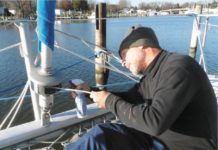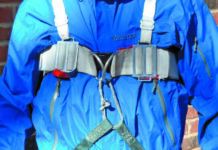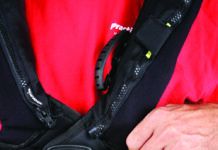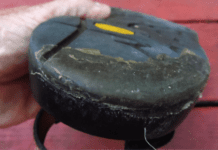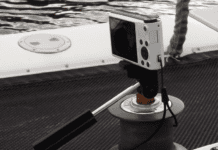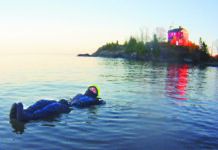Preparing Yourself for Solo Sailing
Last week, I covered some of the things I suggest you need to think through on the boat before heading out solo. Now, what...
How to Select Crew for a Passage or Delivery
Lots of skippers—in fact probably most—do not want to sail solo and I am the last person to try to encourage them to change...
Preparing A Boat to Sail Solo
You have probably heard people say sailing solo is dangerous or irresponsible. How can you keep a proper watch? What happens if you have...
Re-sealing the Seams on Waterproof Fabrics
Rain gear can represent a substantial investment, and it always seems to start leaking long before the garment appears worn. Sometimes the coating wears...
Safer Sailing: Add Leg Loops to Your Harness
Recent fatalities involving racing sailors raised a long-simmering concern weve had regarding the harness and tether design, and the shortcomings of current design when used aboard boats that cruise at double-digit speeds. Although these harness and tethers might keep a sailor from going overboard, the impact loads transmitted via the harness and tether can exceed what the human body can endure (see Building a Custom Safety Tether, PS December 2017).
Rethinking MOB Prevention
Man overboard gear standards are behind the times because the sample size is tiny and the facts surrounding an accident are often clouded and disguised by difficult circumstances. But fixing this is pretty simple; piggyback on standards that have been developed for climbing and industry. The following are just some of the steps that a sailor can take to improve his chances of staying on board.
Resurrecting Slippery Boat Shoes
More than a decade ago, we first reported on a problem with popular boat shoes. It didn’t matter which style they were—traditional topsiders or...
Shoe Goo’s Gift to Sailors
Every now and then, we find ourselves returning to tried and true products, curious if there is some overlooked application for sailors. It was...
PS Advisor: Tank Monitor and Camera Mount Hacks
Fuel tanks typically have a mechanical gauge, but water tanks can cause corrosion and waste tanks will foul the typical mechanical flat mechanism. As...
Rhumb Lines: Cold Weather Sailing
For the first year since escaping New England to take the helm of Practical Sailor in 2005, I’ll be experiencing a true autumn in Marquette, MI—a...



















